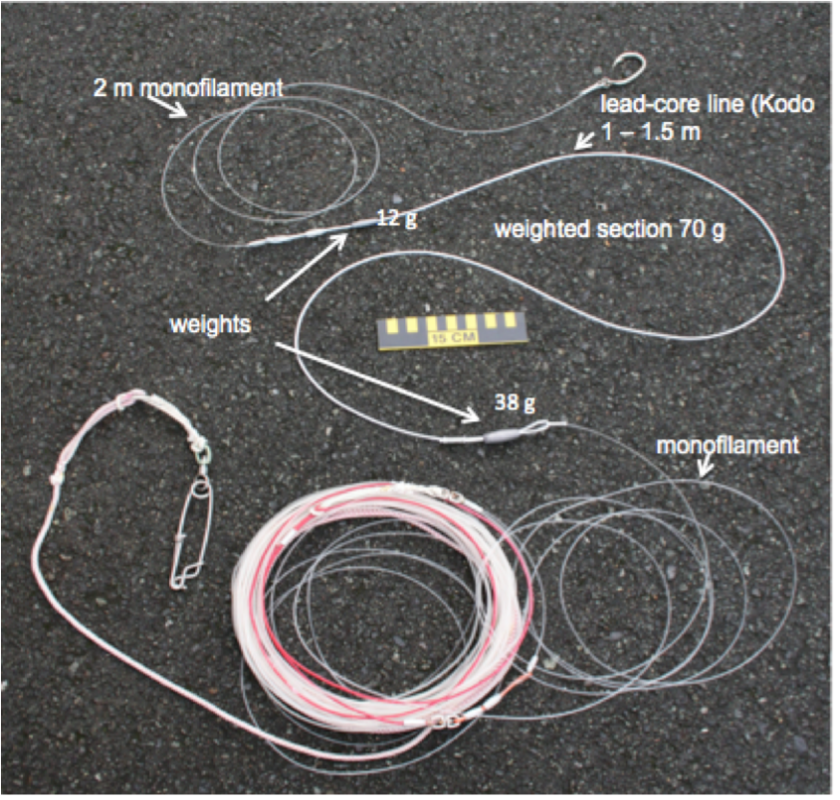Line Weighting Smart Gear Prize
Kazuhiro Yamazaki, Fishing Master of the F/V Fukuseki Maru No 5, won the 2011 Smart Gear award for developing an effective way to weight the line while ensuring crew safety if a hook comes free while under tension during landing. When tested against unweighted branchlines, this “double-weighted” configuration reduced the incidental catch of seabirds by 89 percent with no effect on fish catch rates.
How to Build the Yamazaki Double-Weighted Branchline
The double-weighted branchline is simply a weighted section of line that is inserted into the branchline 2 m above the hook.
Materials Needed
- 2 spindle-shaped leads per branchline
- Lead core line or wire—as heavy as is practical
- Crimping tool and crimps
- Scissor or knife
- Anti-chafing sleeves matching the diameter of lines used
Creating the Weighted Section
Cut 1 to 1.5 m lengths of weighted line. Use either wire or coated, monofilament lead core line (Kodo).
Slide the spindle-shaped lead onto the weighted line, and bend the end of the weighted line into a loop. Slide the spindle-shaped lead over the tail of the loop. Note: The hole running through the spindle-shaped lead should be twice the diameter of the weighted line to allow room for the weighted lines to be inside the lead. Crimp the tail of the loop below the weight. This fixes the position of the weight above the crimp and below the loop.
Repeat this process on the other end of the weighted line, but place the second spindle-shaped lead below the crimp, allowing the spindle-shaped lead to slide the full length of the weighted line.
Inserting the Weighted Section into a Tuna Branchline
Cut the monofilament of an existing branchline 2 m above the hook, and create loops using crimps on both ends created by the cut. Insert the weighted section between the cut sections of the branchline using the loops to secure them. Pull knots tight and smooth to minimize tangles with the monofilament.
Tips
- The loops should be as small as possible to tie the sections together. If the loops are larger than necessary, they can be a source of tangles.
- The weighted section should weigh a minimum of 60 g. The heavier the weighted section, the faster and closer to the boat it will sink, making bird-scaring lines easier to manage. Fishers should consider this configuration a starting point for innovation—more than two leads? Heavier leaded line? Or both?
- If using wire for the weighted section, consider placing an anti-chafing sleeve inside the loop to minimize abrasion with the monofilament.



